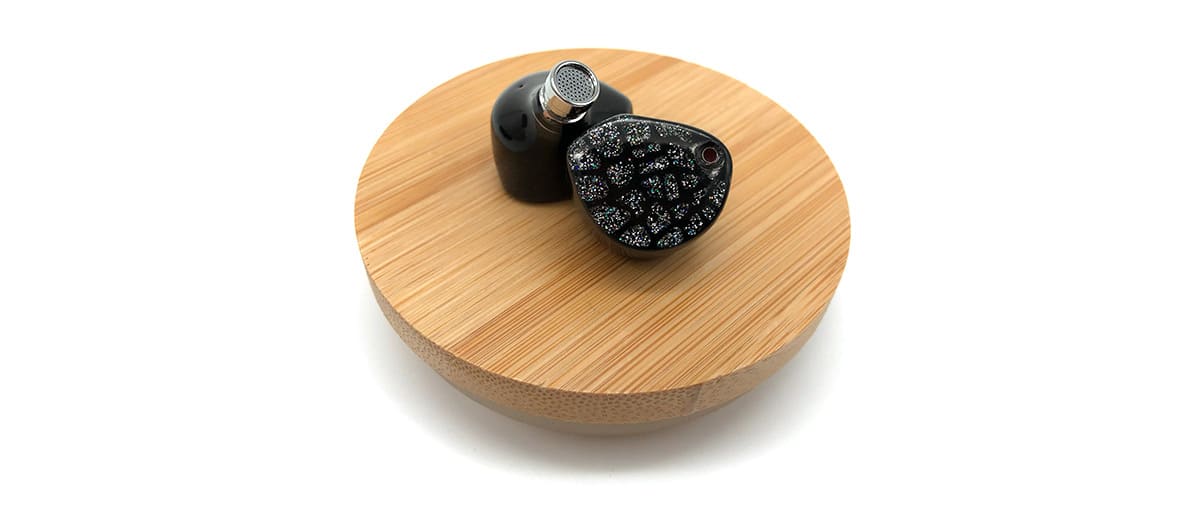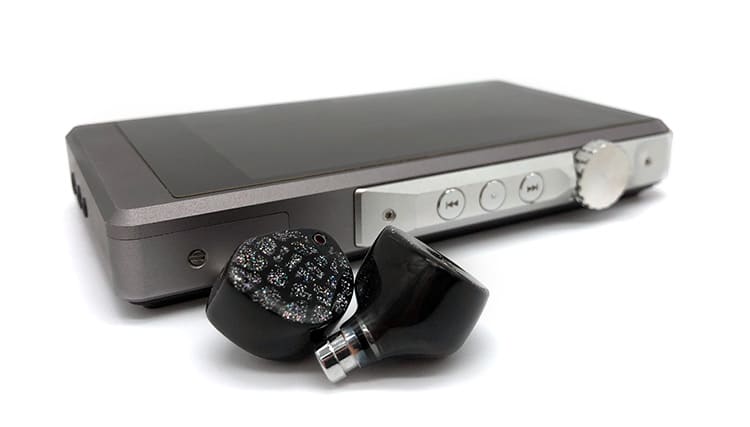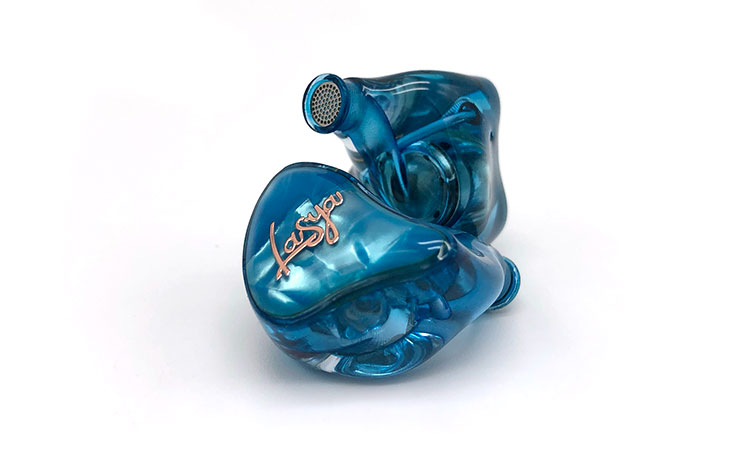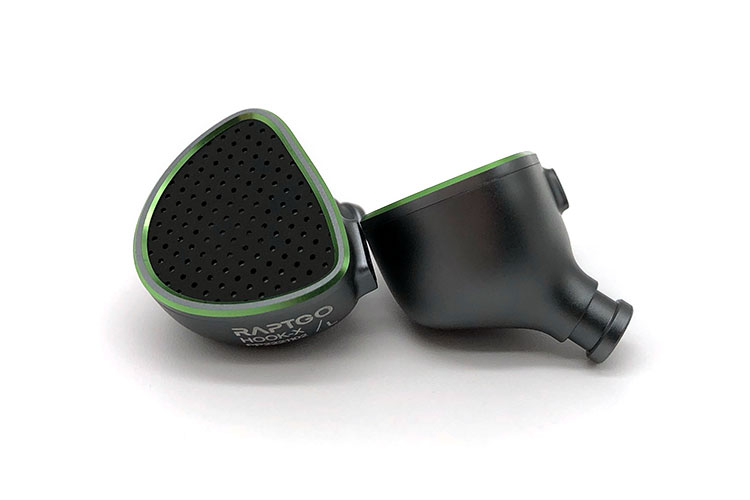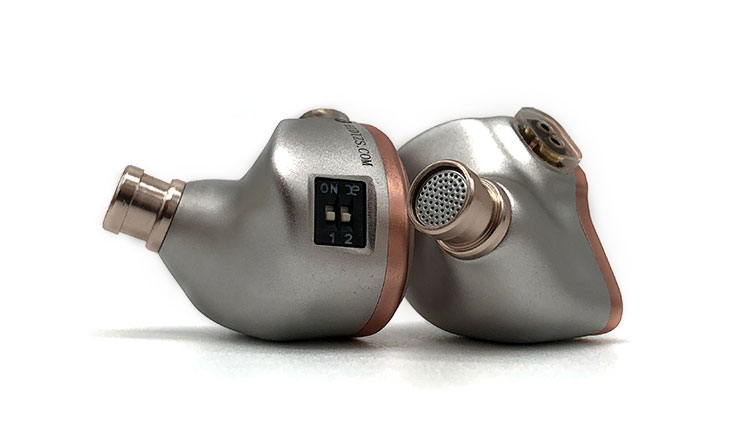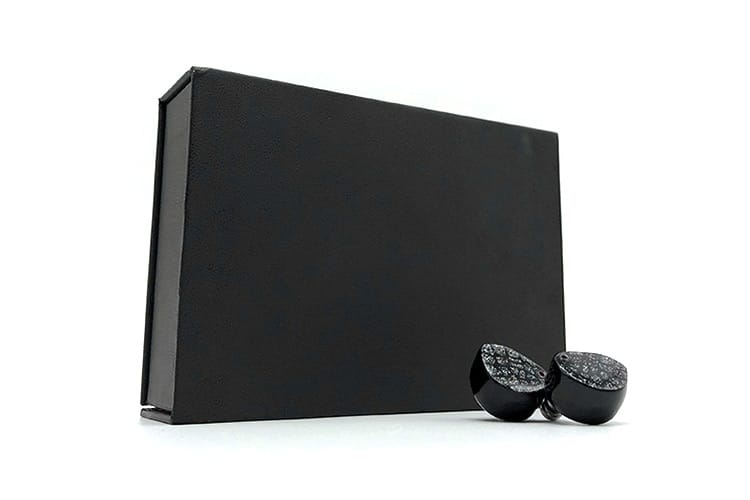Synergy
Efficiency
This pair is one of the easier ones to drive that I have tried. With an impedance of 16Ω and sensitivity level of 115dB, turning down the volume is a more common event than going up.
Using a variety of sources confirms its efficiency as I never went past -57dB using the Topping DX5. With the Sony NW-ZX507, I lowered the volume down to 31% coming from 50% when I was first using it with the Raptgo Hook-X.
Pairings
Checking with the DX5 to get a baseline amidst the volume of bass being thrown out by the Mjölnir MKII, I still felt its craving to be precise. Against the other sources I’ve tried, it is with the DX5 that I heard the drier side of Mjölnir MKII’s low-end together with its capacity to mimic a dynamic treble response.
Changing it up, with the iBasso DX150, the low-end went smoother if only a bit less delineated. Its depiction of loud instruments is of a smaller scale and not as energetic as the DX5 but at least it kept the upper midrange balance allowing it to breathe.
The NW-ZX507 went for an equally powerful slam like the DX5 while also improving on girth and dispersion. It did lose some shimmer in the vocal region which is exchanged for a more luscious warmth.
Select Comparisons
HiBy Lasya
$239
Technical
Trying to keep it as simple and as pure as possible, Hiby went the same single dynamic driver route for the Lasya. The 10mm carbon nanotube diaphragm assembly is less complex without the interesting fusion technology or the powerful magnets in the Mjölnir MKII.
Aside from its sound attuned for vocals, comfort and fit are where the Lasya attempts to lure in potential buyers. Its CIEM-style housing calculated after real-world 3D scans of ear canals and outer-ear structures gives it an advantage in isolation over the more generic housing of the Mjölnir MKII.
Design
Those that like a cheekier impression will appreciate the Lasya over the slightly mysterious aura of the Mjölnir MKII. I think both designs are gorgeous but the Lasya’s faceplate will likely find a younger audience than the Mjölnir MKII with its lighter interlock of shades of blue underneath the playful lettering of its model name.
Hiby used a more transparent housing for the main body, revealing to the outside pretty much everything from the driver’s location to the vent courses.
Performance
There is no equating between the leaner presence of the Lasya against the more exciting kick of the Mjölnir MKII. What can be said though is the preferential treatment to the midrange of the Lasya by keeping its bass a lot leaner, tuned to not offend most listeners.
The Lasya can be thought of as tighter sounding even though its texture in the lower region is not as pronounced. It has a similarly responsive and dynamic presence but is much easier to get muted on vocal-heavy tracks.
Having a more energetic and leaner midrange, instruments like guitars and piano on the Lasya can get much more defined which extends to a more gripping resonance than the Mjölnir MKII. But listening in to isolated instruments sometimes shows the rougher texture of the Lasya.
Nonetheless, if the lower treble presence of the Lasya won’t be a subject of concern, it will reward with a tighter depiction of notes. Between the two, the serenade of a violin in the Lasya is the more inviting one.
Trading precision in instrument placement for a more natural dispersion of sound, the Mjölnir MKII lags close behind the smaller yet more accurate imaging of the Lasya. What the Mjölnir MKII can boast is its taller stage giving breathability to dynamic tracks.
Raptgo Hook-X
$239
Technical
The Hook-X is not a simple hybrid IEM, trying to make a wave by putting planar and piezoelectric technology in a single housing. Slightly less extended in the lower end of the frequency range, the Hook-X is capable of 20Hz-40kHz.
The two drivers are working in tandem by putting the 14.2mm planar driver in charge of creating impactful sub-bass and the 18-layer custom PZT driver to enhance treble presence. In support of the interesting challenge the Hook-X is tackling, it also opened up the faceplate to reduce ear pressure and widen staging performance.
Design
With a lighthearted brand logo to start the Hook-X follows suit in its clean but very casual look which is quite different from the more dignified presence of the Mjölnir MKII. The spearmint trim on the Hook-X is a fresh compliment elevating the pierced matte faceplate.
While very little info is given regarding the design cues and material choices of the Mjölnir MKII, Raptgo proudly mentioned their effort to enhance the housing of the Hook-X to match the typical ear and user. This is useful since the Hook-X is the more sizable IEM.
Performance
Similarly chasing a bass-centric performance, both IEMs adds their unique spice to the sub-bass region. But getting ahead in quantity is the Mjölnir MKII which is the one that more easily thumps even with calmer songs.
On slower and less direct bass dispersion, the Hook-X remains tighter giving a nice emphasis on bite and texture. The Mjölnir MKII on the other hand slightly evens out the subtleties as it returns wider energy and presence.
Comparing the vocal timbre of the Hook-X to the warmth of the Mjölnir MKII, a less heavy but similarly relaxed oomph can be observed. The Mjölnir MKII does a better job at pulling areas of shakiness in a long sustain all the while giving it a more refined and airier trait.
The treble region to Mjölnir MKII is more faithful to the source than the Hook-X sounding serene and splashy compared to the Hook-X which gets metallic and thin.
Having a proper open back case though gives the Hook-X an edge in staging capacity. Right from its more even distribution of objects to the wider and natural placement, its only obstacle is the better separation on the Mjölnir MKII.
Hidizs MD4
$189
Technical
Unlike the careful material consideration of THOR to come up with its desired single dynamic driver sound, the MD4 is more straightforward having four custom balanced armatures individually designed to tackle specific frequencies. Two of the MD4’s drivers are for bass, while one each is used for mids and treble.
Hidizs is taking variable tuning more seriously since this is their second in a row IEM feature of a user-selectable tuning apparatus. On the other hand, the Mjölnir MKII is taking the more conventional route of keeping with a singular sound.
Design
With the presence of gold, the MD4 is also giving off a hint of classiness, especially with Hidizs’ logo with a crown decorating the middle of the IEM. But the glimmering bits and pieces sprayed across the Mjölnir MKII are still more profound.
With no need to further busy the faceplate, the MD4’s tuning switch is strategically placed on top and hidden from view. The Mjölnir MKII however is featuring a replaceable Knowles element on a corner which is the only peculiar part of its exterior.
Performance
Set in balanced mode, the bass region of the MD4 is still not the most neutral around. It does tip the bass energy up but is weaker and drier when compared to the impactful kick of the Mjölnir MKII.
I still think the MD4 on its own can already please a lot of users with its bass presence, but in terms of detail retrieval, it does lag behind the Mjölnir MKII in pulling nuances. It is, however, the more exacting of the two offering a more accurate render and reverb of a hollow cavity.
The Mjölnir MKII does midrange a lot better with guitar strings, detail retrieval, and spatial cues even though the MD4 share a close but less weighty tuning profile. It is when listening to piano instrumentals that the MD4 holds some ground having a more engaging and lifted energy.
Giving violins more muscle yet a smaller presence, the MD4 is not as airy and refined as the Mjölnir MKII. Also, the taller stage and more faithful character of the Mjölnir MKII give the sharp energy of electric guitars a more resolving and controlled depiction.
Our Verdict
While slipping a $200 premium over the original, the THOR Mjölnir MKII rightfully claims its hammer wisely piecing together a detailed and exciting sound without losing control of the objective.
With its all-new driver technology, THOR has delivered a strong bass profile but one that will not kill the enjoyment of the rest of the melody.
Its lack of proper packaging can be excused knowing that time and effort were spent in tuning. I don’t think interested buyers will be shortchanged with this latest pair from THOR as long as the warmth in sound is expected.
THOR Mjölnir MKII Technical Specifications
- Driver: 12.56mm Fusion Diaphragm Dynamic Driver
- Cable: Custom Silver-Plated OCC Copper
- Plug: 3.5mm
- Connector: 0.78mm 2pin
- Impedance: 16W
- Sensitivity: 115dB
- Frequency response range: 8-40000Hz

